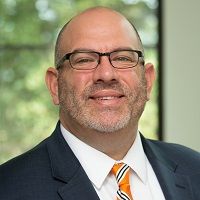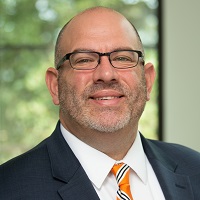For a More Secure Retirement, Build in Some 'Safe Money'
To solidify your retirement plan, write it down, reduce your market risk and allocate more safe money into your plan for income.


If you're within five or six years of retirement, or if you're already retired, you need to have a written retirement income plan so you know three things:
- What sources your money is coming from
- When it’s coming in
- The tax implications of that income each month and each year during your retirement
These days, having a precise plan is paramount because retirement is harder for many people than it was 30-plus years ago.
Strong legs to stand on
I think back to my grandfather and his retirement. He passed away in 1991. After serving in World War II as an Army pilot, he came home to work in the insurance industry. When he retired, he had a pension, along with his Social Security and retirement savings that he and my grandma put away.
From just $107.88 $24.99 for Kiplinger Personal Finance
Become a smarter, better informed investor. Subscribe from just $107.88 $24.99, plus get up to 4 Special Issues

Sign up for Kiplinger’s Free Newsletters
Profit and prosper with the best of expert advice on investing, taxes, retirement, personal finance and more - straight to your e-mail.
Profit and prosper with the best of expert advice - straight to your e-mail.
That was in the days of the “three-legged retirement income stool.” For the most part, most people were able to cover their basic bills with Social Security and their pension — guaranteed forms of income that arrived every month. Most of the time, that income increased with inflation. Because he had a pension and Social Security, my grandfather viewed their personal savings as fun money — what he used to spoil the grandkids, like me.
But here’s the problem: Now, we have a retirement income stool that, for most people, has lost a leg. It’s really like 1½ legs. Pensions are largely gone. Because of that, much of the pressure is on you to create your own retirement income.
Sure, companies have done some nice things, such as offering 401(k)s with a company match. But, meanwhile, there are questions about the solvency of the Social Security program. Benefits could be significantly reduced in a few years, effectively shortening one of the other legs of the retirement income stool.
Or the government could extend the full retirement age. Think about it: Now, if you wanted to retire at 65, you could probably live off your personal savings for a couple of years and then turn on Social Security at 67, the full retirement age range for many people. But let’s say the full retirement age for Social Security is extended to 69, and you wanted to retire at 65. In that case, you would need to depend on your personal savings for four years of income before drawing Social Security.
When it comes to your retirement income plan, your personal savings leg of that stool is taking on a huge burden it didn’t have in the past. Now, we have to think about a different concept: How do you structure personal savings to provide the income you need over the long term in retirement?
Simple math to avoid retirement complications
It’s prudent to talk about retirement income planning in two cycles:
- What is your base income? What do you need on a monthly basis to pay your bills?
- What’s your ideal income? What do you want to do in retirement? What do you want to spend every year on your retirement goals?
You have to have a written income plan that accounts for how much you are going to spend monthly on bills and fun things. Then you subtract how much is coming in from your guaranteed income streams (Social Security, pensions, annuities). There’s often a gap, and that gap has to be filled by your savings. Here’s where the kicker comes: If 90% of your personal savings is invested in equities, you're taking on a huge risk. That’s because if the stock market dips significantly, your over-allocation in it can be a problem.
The bottom line: You do not want to have your everyday expenses tied up in Wall Street performance. What you should do to safeguard much of that money is take your personal savings and slice off the amount you need to fill that monthly gap. That needs to be your “safe money” — money that can withstand all the different seasons of the market.
With the rest of your personal savings, you can take your risks. You can try to catch lightning in a bottle with high returns in a particular year because, if your base budget is covered with monthly guaranteed income streams and the part of your personal savings you designated to cover the gap, then the rest of it is icing on the cake.
It all comes down to an income plan
I ask people all the time: What is your written income plan? They slide an income statement across the table to me. I say, “This is nice, but it’s a portfolio, not a plan. What's your written income plan?” They say, “When we need money, we just call our broker, and they sell some stuff, and it shows up in my checking account.” I ask them, “Is there a method to the madness of what they’re selling? And are you taking into account the tax consequences of the sale of those positions?”
Drawing a dependable monthly income and making sure the legs on your income stool are strong enough to stand on are the keys to a happy retirement. A written plan that includes reducing your market risk will give you more confidence about your financial future.
Dan Dunkin contributed to this article.
The appearances in Kiplinger were obtained through a public relations program. The columnist received assistance from a public relations firm in preparing this piece for submission to Kiplinger.com. Kiplinger was not compensated in any way.
Related Content
- 10 to 15 Years From Retirement? Time to Scale Back Risk
- Retirement Income Strategies for the Long Haul
- 10 Ways to Generate Retirement Income
- Five Tax Strategies to Help Your Money Last in Retirement
- Risk in Retirement: What’s the Right Level for You?
Profit and prosper with the best of Kiplinger's advice on investing, taxes, retirement, personal finance and much more. Delivered daily. Enter your email in the box and click Sign Me Up.

Kevin Wade is a lead financial adviser at Centennial Advisors, LLC. Centennial Advisors is an SEC-Registered Investment Adviser and uses a variety of different investment strategies. Registration as an investment adviser does not imply a certain level of skill or training. This is prepared for informational purposes only. He concentrates in comprehensive income and investment planning and holds a bachelor’s degree in business management from Manhattan Christian College. Wade has passed the Series 65 securities exam and has a Texas insurance license.
-
 I'm 73 and hate winter, but I can't afford to be a snowbird.
I'm 73 and hate winter, but I can't afford to be a snowbird.How can a snowbird wannabe warm up without the expense? We asked professional wealth planners for advice.
-
 5 Smart Things to Do With Your Year-End Bonus
5 Smart Things to Do With Your Year-End BonusAfter you indulge your urge to splurge on a treat, consider doing adult things with the extra cash, like paying down debt, but also setting up a "fun fund."
-
 Gen X Investors: Protect Your Portfolio From an AI Bubble
Gen X Investors: Protect Your Portfolio From an AI BubbleAmid talk of an AI bubble, what's the best course of action for investors in their 50s and 60s, whose retirement savings are at risk from major market declines?
-
 I'm 73, Retired, and Dreading Winter, But I Can't Afford to Be a Snowbird. Help!
I'm 73, Retired, and Dreading Winter, But I Can't Afford to Be a Snowbird. Help!How can a snowbird wannabe warm up without the expense? We asked professional wealth planners for advice.
-
 5 Smart Things to Do With Your Year-End Bonus, From a Financial Professional
5 Smart Things to Do With Your Year-End Bonus, From a Financial ProfessionalAfter you indulge your urge to splurge on a treat, consider doing adult things with the extra cash, like paying down debt, but also setting up a "fun fund."
-
 Are You a Gen X Investor? Here's How You Can Protect Your Portfolio From an AI Bubble
Are You a Gen X Investor? Here's How You Can Protect Your Portfolio From an AI BubbleAmid talk of an AI bubble, what's the best course of action for investors in their 50s and 60s, whose retirement savings are at risk from major market declines?
-
 Hey, Retirees: Put Your Charitable Gifts in a Donor-Advised Fund (and Enjoy Your Tax Break)
Hey, Retirees: Put Your Charitable Gifts in a Donor-Advised Fund (and Enjoy Your Tax Break)A donor-advised fund is a simple (really!), tax-smart strategy that lets you contribute a large, tax-deductible gift now and then distribute grants over time.
-
 Nasdaq Sinks 418 Points as Tech Chills: Stock Market Today
Nasdaq Sinks 418 Points as Tech Chills: Stock Market TodayInvestors, traders and speculators are growing cooler to the AI revolution as winter approaches.
-
 The Rule of Compounding: Why Time Is an Investor's Best Friend
The Rule of Compounding: Why Time Is an Investor's Best FriendDescribed as both a "miracle" and a "wonder," compound interest is simply a function of time.
-
 The 7-Month Deadline That Determines Your Lifetime Medicare Premiums
The 7-Month Deadline That Determines Your Lifetime Medicare PremiumsUnderstanding Medicare enrollment is crucial, as missing deadlines can lead to permanent late enrollment penalties and gaps in coverage.
-
 If You're a U.S. Retiree Living in Portugal, Your Tax Plan Needs a Post-NHR Strategy ASAP
If You're a U.S. Retiree Living in Portugal, Your Tax Plan Needs a Post-NHR Strategy ASAPWhen your 10-year Non-Habitual Resident tax break ends, you could see your tax rate soar. Take steps to plan for this change well before the NHR window closes.